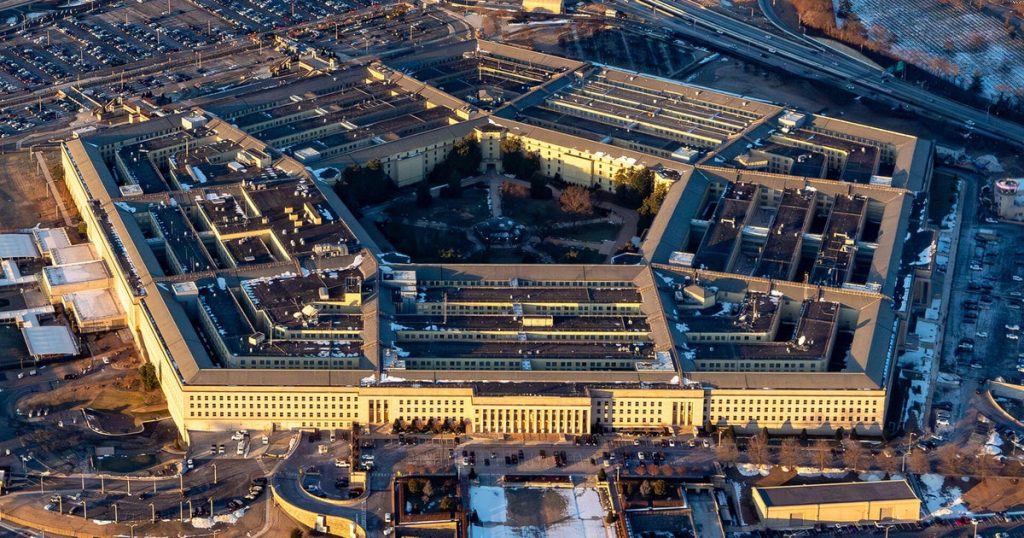Introduction
Recent personnel cuts ordered by Defense Secretary Pete Hegseth at the Pentagon have significantly impacted the Office of the Director of Operational Test and Evaluation (DOT&E). These changes have led to the suspension of all operations at the Institute for Defense Analyses (IDA), a think tank that plays a crucial role in supporting the weapons testing office. In a letter to IDA staff, president Norton “Norty” Schwartz expressed deep concerns over the ramifications of losing contracts, which threaten staffing levels and ongoing projects within the organization.
Article Subheadings
1) Overview of Pentagon’s DOT&E Operations
2) Personnel Cuts and Their Immediate Consequences
3) Historical Context of DOT&E’s Establishment
4) Congressional Reactions and Concerns
5) Future Implications for Military Oversight
Overview of Pentagon’s DOT&E Operations
The Office of the Director of Operational Test and Evaluation (DOT&E) is tasked with ensuring that all Pentagon weapon systems undergo rigorous testing before they can proceed to full production. This oversight is crucial as it provides an independent perspective on the effectiveness of these systems under real-world conditions. Currently, DOT&E oversees more than 230 weapon systems at various procurement stages. By law, no such system can move forward without the office’s approval, which adds a layer of accountability to military spending. The agency ensures that the systems are operationally effective and fulfill their intended purpose, giving lawmakers and the public an insight into the military’s capacities.
Personnel Cuts and Their Immediate Consequences
In a memo issued by Secretary Hegseth, sweeping cuts to the DOT&E personnel were highlighted, reducing its civilian workforce from 118 to just 30 employees, alongside staff adjustments for uniformed personnel. This drastic downsizing has left the IDA, which offers essential support to the DOT&E, grappling with contract terminations. Schwartz informed his staff that they could not maintain current staffing levels due to the financial fallout from these decisions. As a result, the agency is now assessing the full impact of these cuts, having already halted all ongoing tasks related to DOT&E. The memo indicated potential annual savings for the Pentagon of over $300 million, shedding light on the cost-cutting agenda driving these decisions.
Historical Context of DOT&E’s Establishment
Founded in 1983, DOT&E emerged from concerns regarding the Pentagon’s oversight of weapon system performance. At that time, legislators voiced frustrations about the quality of military procurement oversight, fearing that Congress and the Defense Department were uninformed about the true effectiveness of costly military investments. DOT&E was established to provide objective assessments and evaluations of weapon systems before full-scale production. Over the years, the office has aimed to enhance transparency and accountability in defense spending, ensuring that taxpayer money contributes to effective military capabilities.
Congressional Reactions and Concerns
The recent cuts have raised eyebrows among lawmakers, particularly among members of Congress. Senator Roger Wicker, a prominent figure in the Senate Armed Services Committee, voiced concern about the implications of Hegseth’s decisions. He articulated the need for clarity from defense leadership and indicated that such drastic measures could represent a reversal of established congressional policies. The senator’s inquiries reflect a wider uncertainty within legislative circles about the adequacy of military oversight and evaluation in light of reduced resources. Stakeholder feedback from experts in defense matters is critical in assessing the long-term implications of these cuts on operational capability and accountability.
Future Implications for Military Oversight
The cuts to DOT&E and the subsequent suspension of IDA’s projects raise significant questions about the future of military oversight. With a drastically reduced workforce and limited contractor support, the office may find it challenging to fulfill its congressional obligations. Experts warn that the risk of underperformance in testing and evaluation processes could increase, leading to a failure in adequately assessing weapon systems. Those familiar with the operations of DOT&E, including former officials, caution that the office may struggle to accomplish essential tasks, such as preparing the annual report mandated by federal law, which comprehensively details weapons testing and evaluation processes. This report plays an indispensable role in informing policymakers and the public about the military’s capabilities and spendings.
Key Points
| No. | Key Points |
| 1 | Personnel cuts at DOT&E have led to operational Halts at IDA. |
| 2 | The changes reflect a larger cost-cutting strategy within the Defense Department. |
| 3 | DOT&E was established to provide independent assessments of weapon systems. |
| 4 | Concerns from Congress highlight the potential risks associated with reduced oversight. |
| 5 | Future military operational capabilities may be jeopardized due to these cuts. |
Summary
The personnel cuts initiated by Secretary Hegseth have cascading effects that could jeopardize the efficacy of the Pentagon’s testing and evaluation processes. The implications are extensive; as IDA grapples with contract terminations, the resulting loss of expertise may hinder its capabilities at a vital juncture. Lawmakers are keenly aware of these developments and are expressing serious concerns about the future of military oversight. Continued dialogue will be necessary among stakeholders to address the long-term consequences of these decisions and ensure the military can effectively assess and implement its weapon systems.
Frequently Asked Questions
Question: What prompted the cuts to the DOT&E?
The cuts to the DOT&E were initiated by Secretary Hegseth as part of a broader strategy to reduce costs within the Department of Defense. The memo described the office’s work as “redundant” and not essential for operational agility.
Question: What role does the Institute for Defense Analyses play in relation to DOT&E?
The Institute for Defense Analyses (IDA) provides crucial technical expertise and support to the DOT&E, enabling it to perform its oversight and testing functions effectively. The recent cuts have halted IDA’s operations tied to the Pentagon.
Question: How have Congress members responded to the cuts?
Members of Congress, particularly from the Senate Armed Services Committee, have voiced concerns regarding the ramifications of these cuts. They fear that such drastic reductions could undermine military oversight and effectiveness.


